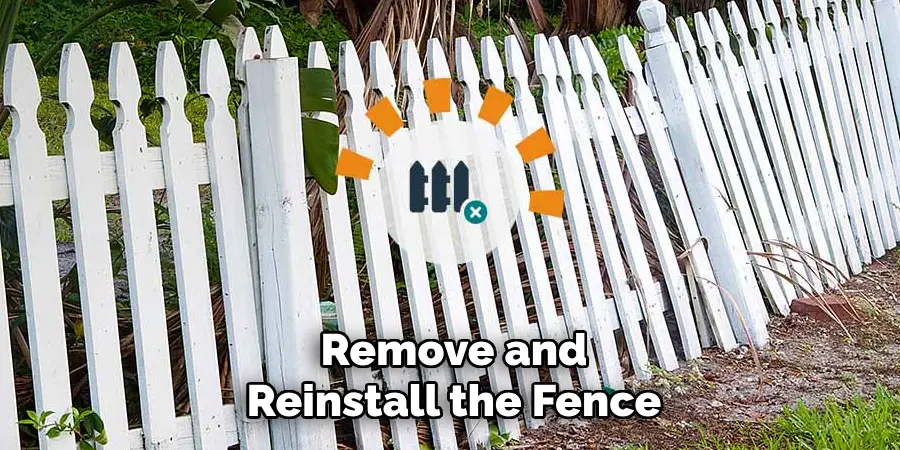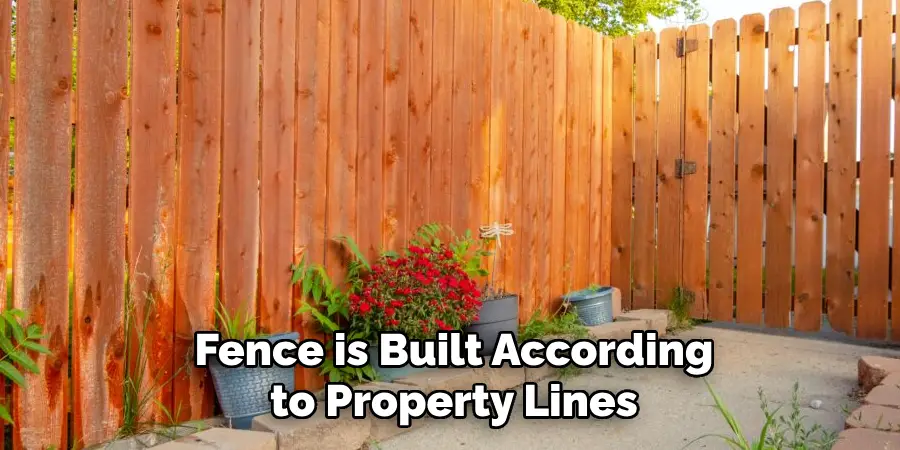Embarking on a fence installation project is an exciting endeavor, but its success hinges on a crucial preliminary step – getting your property surveyed. Accurate boundaries ensure not only the legality of your fence but also prevent potential disputes with neighbors.

Surveying your property for a fence involves a systematic process to determine property lines, easements, and any encroachments that might affect your project.
In this guide, we will explore essential steps and considerations on how to get property surveyed for fence. From hiring a licensed surveyor to understanding local regulations, we’ll navigate the intricacies of property boundaries, equipping you with the knowledge needed for a seamless and legally compliant fence installation.
Say goodbye to uncertainties and hello to a well-defined property ready to embrace the addition of a sturdy and aesthetically pleasing fence.
Importance of Property Surveying for Fence Installation
Before the first post is planted or panel placed, a clear understanding of your property lines is paramount. Property surveying stands as the foundation upon which a legally sound and neighborly fence installation rests. It not only delineates the scope of your domain but also serves to protect you from costly legal disputes and the headache of potential removal or adjustments post-installation.
Moreover, surveying reveals any local easements and compliance specifics that could influence the type of fence you erect or the materials you choose. It is through this meticulous preparation process that you can embark upon your fencing project with complete confidence and peace of mind.
Benefits of a Professionally Surveyed Property
Having your property professionally surveyed is an investment that pays dividends in the long run. Firstly, it provides legal assurance. A survey conducted by a licensed professional stands up in legal matters, proving exactly where your property boundaries lie. Secondly, accuracy is guaranteed.
A professional surveyor uses precise tools and methods to deliver reliable results, avoiding the possibility of errors that could cost you in future modifications or disputes. Thirdly, resolving disputes preemptively becomes easier; a clear and authoritative survey can help pacify neighborly concerns before they escalate. Lastly, enhanced planning and development opportunities.

A survey offers a detailed topographical layout of your land that is invaluable for any landscaping or construction plans, ensuring that every addition is made in the right place with the right dimensions.
Understanding Property Surveying
A property survey is a comprehensive report that outlines the exact boundaries and corners of a piece of land. Performed by certified professionals, these surveys utilize historical records, land titles, and physical measurements to map out a property’s confines.
During the process, surveyors may employ a variety of tools such as GPS devices, measuring wheels, and electronic distance and angle measuring instruments to produce a detailed depiction of the property. Understanding a property survey involves familiarizing oneself with terms such as ‘bearings’, ‘monuments’, ‘plat’, and ‘metes and bounds’ – exact markers and descriptions used to define property lines accurately.
It’s essential to recognize that survey methodologies and requirements can vary based on local laws and the intended use of the land, necessitating that you consult with a professional versed in the specific mandates of your area.
Types of Property Surveys for Fence Installation
When planning to install a fence, understanding the different types of property surveys available is crucial for choosing the right one for your specific needs. The most common include:
- Boundary Survey: This is the most relevant for fence installation, as it determines the precise legal boundary of your property.
- Topographic Survey: While not typically necessary for fences, this type maps the elevation and features of the land, which can be crucial for certain types of fence construction.
- ALTA/NSPS Land Title Survey: A comprehensive type that combines boundary and topographic surveys, often used for commercial properties or in transactions requiring title insurance.
- Site Planning Survey: Combines a boundary and topographic survey to aid in planning and design efforts; useful if your fence project is part of a larger landscaping or construction plan.
- Construction Survey: Assists in the planning and placement of structures, including fences, to ensure they are built in the correct location.

Each of these surveys serves a unique role and may be required or beneficial depending on jurisdictional requirements or the nature of your property and project. It is advisable to discuss your fence installation goals with a professional surveyor who can recommend the appropriate type of property survey.
10 Methods How to Get Property Surveyed for Fence
1. Hire a Professional Land Surveyor:
The most accurate and reliable method is to hire a licensed land surveyor. These professionals use advanced equipment to measure and map your property accurately. They provide a survey document, often called a property survey or boundary survey, detailing property lines and relevant information.
This is a crucial step in any property transaction, as it ensures that you are aware of the exact boundaries and features of your land.
Licensed land surveyors have extensive training in both the science and art of surveying. They are knowledgeable about various legal principles, including land ownership laws, property deeds, and boundary disputes. They also have expertise in using sophisticated tools such as global positioning systems (GPS) and total stations to accurately measure and record property features.
Hiring a professional land surveyor can save you time, money, and potential legal issues in the long run. By having an accurate property survey, you can avoid encroaching on your neighbor’s land or facing disputes over property boundaries. Additionally, if any discrepancies arise between your property lines and those of neighboring properties, a professional surveyor can help resolve the issue.
2. Check Local Regulations:
Before initiating the survey process, familiarize yourself with local regulations regarding property surveys and fence installations. Some municipalities have specific requirements or guidelines that may influence the surveying process.
These may include property boundaries, fence height limitations, or fencing materials that are allowed. Knowing these regulations beforehand can help ensure a smooth and successful survey process.
It is also important to check with your homeowners association or any other governing bodies for any additional rules or restrictions on fence installations. This is especially crucial if you live in a neighborhood with shared fences or common areas. Violating these regulations can result in fines or having to remove and reinstall the fence, costing you time and money.

Additionally, be aware of any easements or right-of-ways on your property that may impact the placement of a fence. Easements are designated areas on your property for utility companies or other entities to have access to certain areas. Installing a fence over an easement can result in damage to the fence or costly legal issues.
3. Review Property Deeds and Documents:
Examine your property deeds and any related documents to gather information on property lines and easements. This historical data can provide valuable insights for the surveyor and may help in identifying any pre-existing survey information.
Although deeds can provide detailed descriptions of a property’s boundaries, they may not always be accurate or up-to-date. It is important to consult with a licensed surveyor for an accurate determination of property lines.
In addition to the property deeds, there are other important documents that you should review. These include surveys conducted by previous owners, subdivision maps, and building permits.
These documents can provide information on the property’s boundaries and any changes that may have been made to them over time. It is also important to check for any easements or right-of-ways that may affect your property.
It is crucial to review these documents carefully and compare them with each other to ensure accuracy. If there are discrepancies, it is best to consult with a surveyor for clarification. These documents can also provide information on any restrictions or limitations on the use of your property, such as zoning regulations or building codes.
4. Collaborate with Neighbors:
Open communication with neighbors is beneficial, especially if you’re planning a shared fence. Discuss the surveying process with neighbors to ensure alignment and prevent potential disputes. Cooperation can lead to a more efficient surveying experience. Additionally, working together can save you both time and money.
Consider asking for your neighbor’s input on design or material choices. They may have specific preferences that could affect the cost or timeline of the project. By collaborating, you can come to a mutual agreement and avoid any disagreements later on.

In some cases, it may be necessary to hire a professional surveyor to mediate any issues or concerns that arise between neighbors. This can help prevent any conflicts from escalating and ensure that the fence is built according to property lines and local regulations.
5. Use Online Mapping Tools:
Some online mapping tools provide a preliminary understanding of property boundaries. While not as accurate as a professional survey, they can offer a starting point for your fence planning. Google Earth and other mapping services can be useful for a rough estimate.
However, for a more precise and accurate representation of property lines, it is recommended to use dedicated online mapping tools such as Property Line Maps or MyTopo. These services specialize in providing detailed property line maps and aerial imagery that can give you a better understanding of your property boundaries.
Additionally, some online mapping tools also offer features such as measuring distances and angles, which can be helpful when planning the layout of your fence. It is important to note that these tools should only be used as a reference and not relied upon for legal purposes.
6. Consult a Title Company:
Title companies often have access to property records and survey information. Reach out to a local title company to inquire about any existing surveys or information relevant to your property boundaries. They can also provide you with information about your property’s title and any easements or encumbrances that may impact your use of the land.

Additionally, title companies can assist with the closing process when purchasing a property. They will review all necessary documents and ensure that the title is clear before transferring ownership to the new owner. Utilizing a title company during the purchase process can help alleviate potential legal issues and provide peace of mind for both the buyer and seller.
In addition to their services during a property purchase, title companies can also assist with refinancing or obtaining a new mortgage. They will conduct a thorough title search to ensure that there are no outstanding liens on the property that could affect the lender’s investment. This step helps protect the lender from any potential financial losses.
7. Verify Fence Laws and Setbacks:
Understand local laws and setbacks governing fence installations in your area. Setbacks dictate how far a structure must be from the property line. Integrating this knowledge into the survey process ensures compliance with regulations. Additionally, understanding local fence laws can help avoid fines and disputes with neighbors.
It is important to note that fence laws and setbacks can vary greatly depending on your location. It is always a good idea to research and familiarize yourself with these laws before beginning any fence installation project.
In some areas, there may be specific regulations regarding the height, material, and location of fences. These laws are in place for safety reasons and to ensure harmonious relationships between neighbors.
In addition to researching local laws, it is also important to communicate with your neighbors about your fence installation plans. Not only does this show respect and consideration for their property, but it can also help address any concerns they may have.
8. Mark Potential Fence Lines:
Prior to the surveyor’s arrival, mark your desired fence lines using temporary markers like stakes or flags. This provides a visual guide for the surveyor and helps ensure that the proposed fence aligns with your preferences.
It is important to mark potential fence lines in advance so that any necessary adjustments can be made before the survey begins. This will save time and avoid any potential conflicts or delays during the installation process.

When marking your desired fence lines, it is also important to consider any existing structures or utilities that may interfere with the placement of the fence. This includes trees, buildings, underground cables, and pipes. Be sure to mark these on your map or notify the surveyor so that they can make any necessary adjustments.
In addition to marking potential fence lines, it is also helpful to clearly communicate any specific regulations or guidelines that must be followed for your property. This could include setback requirements, height limitations, or materials restrictions set by local authorities.
9. Consider Topography and Terrain:
Factor in the topography and terrain of your property during the surveying process. Sloping landscapes may impact the placement of your fence, and a professional surveyor can account for these variations. Additionally, the size and shape of your property will impact the cost of the survey. If you have a large or oddly shaped plot of land, it may be more expensive to survey.
It is also important to consider any natural features that may affect the placement or construction of your fence. This could include bodies of water, dense vegetation, or rocky areas. These features can impact the stability and durability of your fence, so it is important to account for them during the surveying process.
When surveying your property, you should also take into consideration any potential zoning or building regulations that may affect the placement or type of fence you are allowed to have. This information can be obtained from your local government or homeowner’s association.
10. Document and Preserve Results:
Once the survey is complete, keep a copy of the survey document for your records. This document is crucial for legal purposes and future reference. Share the results with neighbors if necessary, fostering transparency and preventing potential disputes.

It is also important to preserve the results of the survey in a secure and organized manner. This will ensure that the data remains accurate and easily accessible for future use. Consider using a digital platform or database to store the results, as it can provide efficient search and retrieval capabilities.
In addition, consider creating a summary or report based on the survey results. This can be useful in presenting the findings to stakeholders, such as community leaders or government officials. It can also serve as a reference point for any future surveys or projects related to the same area.
Conclusion
In conclusion, ensuring accurate property boundaries through professional surveying is paramount for a successful and legally compliant fence installation process. By enlisting the expertise of qualified surveyors, homeowners can confidently define property lines, address potential disputes, and obtain necessary permits for their fence project.
Thorough preparation, including gathering relevant documents and communicating with neighbors, sets the stage for a smooth surveying process. Reviewing survey results with diligence and obtaining required permits and approvals contribute to a well-informed and legally sound fence installation plan.
Effective communication with neighbors fosters transparency and minimizes conflicts regarding property boundaries and fence placement. Ultimately, investing in property surveying not only facilitates the installation of a fence but also provides homeowners with peace of mind, knowing that their property lines are accurately defined and their fence project is in compliance with local regulations. Thanks for reading, and we hope this has given you some inspiration on how to get property surveyed for fence!
About
Outdoor Fixes is a distinguished figure in the world of Diy design, with a decade of expertise creating innovative and sustainable Diy solutions.
His professional focus lies in merging traditional craftsmanship with modern manufacturing techniques,
fostering designs that are both practical and environmentally conscious. As the author of diy,
outdoorfixes delves into the art and science of outdoorfixes-making, inspiring artisans and industry professionals alike.
Education RMIT University
(Melbourne, Australia) Associate Degree in Design (Outdoor Fixes) Focus on sustainable design, industry-driven projects,
and practical craftsmanship. Gained hands-on experience with traditional and digital manufacturing tools, such as CAD and CNC software.
Nottingham Trent University
(United Kingdom) Bachelor’s in outdoorfixes.com and Product Design (Honors) Specialized in product design with a focus on blending creativity with production
techniques. Participated in industry projects, working with companies like John Lewis and Vitsoe to gain real-world insights.
Publications and Impact
In diy, Outdoor Fixes his insights on indoor design processes, materials, and strategies for efficient production.
His writing bridges the gap between artisan knowledge and modern industry needs, making it a must-read for both budding designers and seasoned professionals.

